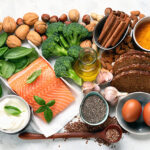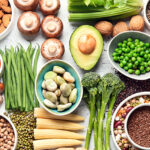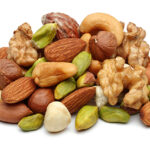Curly Questions
“I am a type 2 diabetic who tracks my carbs with the GI; however, I was wondering about how the GI should actually be used when other foods that are high in protein, but contain the proper amount and type of fat too, are eaten knowing this slows the digestive process and helps regulated the glucose level of the body?”
The GI was introduced to rank the glycemic nature of the carbohydrate in individual foods. The purpose was to exchange one carbohydrate source with another in mixed meals or snacks. People often ask about the effect of extra protein and fat in the food on GI and blood glucose response. Eaten alone, protein and fat have little effect on blood glucose levels, but that’s not to say they won’t affect your blood glucose response when combined with a carb-rich food. This is because protein and fat both tend to delay stomach emptying, thereby slowing the rate at which carbohydrate can be digested and absorbed. So a high fat meal will have a lower glycemic effect than a low fat meal even if they both contain the same amount and type of carbohydrate.
![[PROTEIN]](https://glycemicindex.com/blog/2008/oct08/kebabs175.jpg)
More importantly, a meal’s GI value doesn’t make it good or bad for you. You need to base your food choices on the overall nutritional content along with the amount of saturated fat, salt, fibre and of course, GI value. We have found that people who simply substitute a low GI food for a high one in their everyday meals and snacks (especially with their choice of breads, breakfast cereals, starchy vegetables) reduce the overall GI of their diet, gain better blood glucose control and lose weight.
“Is there a GI number I should strive for each day? Or one that I should not go over?”
We are often asked if there’s a ‘GI to shoot for’. The simple answer is no, there’s no formula. You don’t need to add up the GI each day. In fact there’s no counting at all as there is with calories/kilojoules. The basic technique for eating the low GI way is simply ‘This For That’: swapping the high GI carbs in your diet with low GI foods. This could mean eating muesli at breakfast instead of wheat flakes or a grainy low GI bread instead of normal white or wholemeal bread. So, what you need ‘to shoot for’ is identifying the high GI carbs in your current diet and swapping them for some quality low GI carbs. Dietitian Kaye Foster-Powell says in Low GI Eating Made Easy: ‘We have found that many people who substitute low for high GI foods in their everyday meals and snacks reduce the overall GI of their diet, gain better blood glucose control and lose weight.
![[NUMBERS]](https://glycemicindex.com/blog/2008/oct08/numbers225.jpg)
If you are looking for some guidelines, here are some tips.
Every day you need to:
- Eat at least three meals—don’t skip meals. Eat snacks too if you are hungry.
- Eat fruit at least twice—fresh, cooked, dried, juices.
- Eat vegetables at least twice—cooked, raw, salads, soups, juices and snacks.
- Eat a cereal at least once—such as bread, breakfast cereal, pasta, noodles, rice and other grains in a wholegrain or low GI form
- Accumulate 60 minutes of physical activity (including incidental activity and planned exercise).
Every week you need to:
- Eat beans, peas and/or lentils—at least twice. This includes baked beans, chickpeas, red kidney beans, butter beans, split peas and foods made from them such as hommous and dhal.
- Eat fish and seafood at least once, preferably twice, each week—fresh, smoked, frozen or canned.
- Eat nuts regularly—just a tiny handful.
Email your curly question about carbs, the GI and blood glucose to: gicurlyquestions@gmail.com







